Why People Development Is Your #1 Competitive Advantage Today
Struggling to compete? See why people development isn't just HR, it's the critical difference that makes you unbeatable today.
Struggling to compete? See why people development isn't just HR, it's the critical difference that makes you unbeatable today.
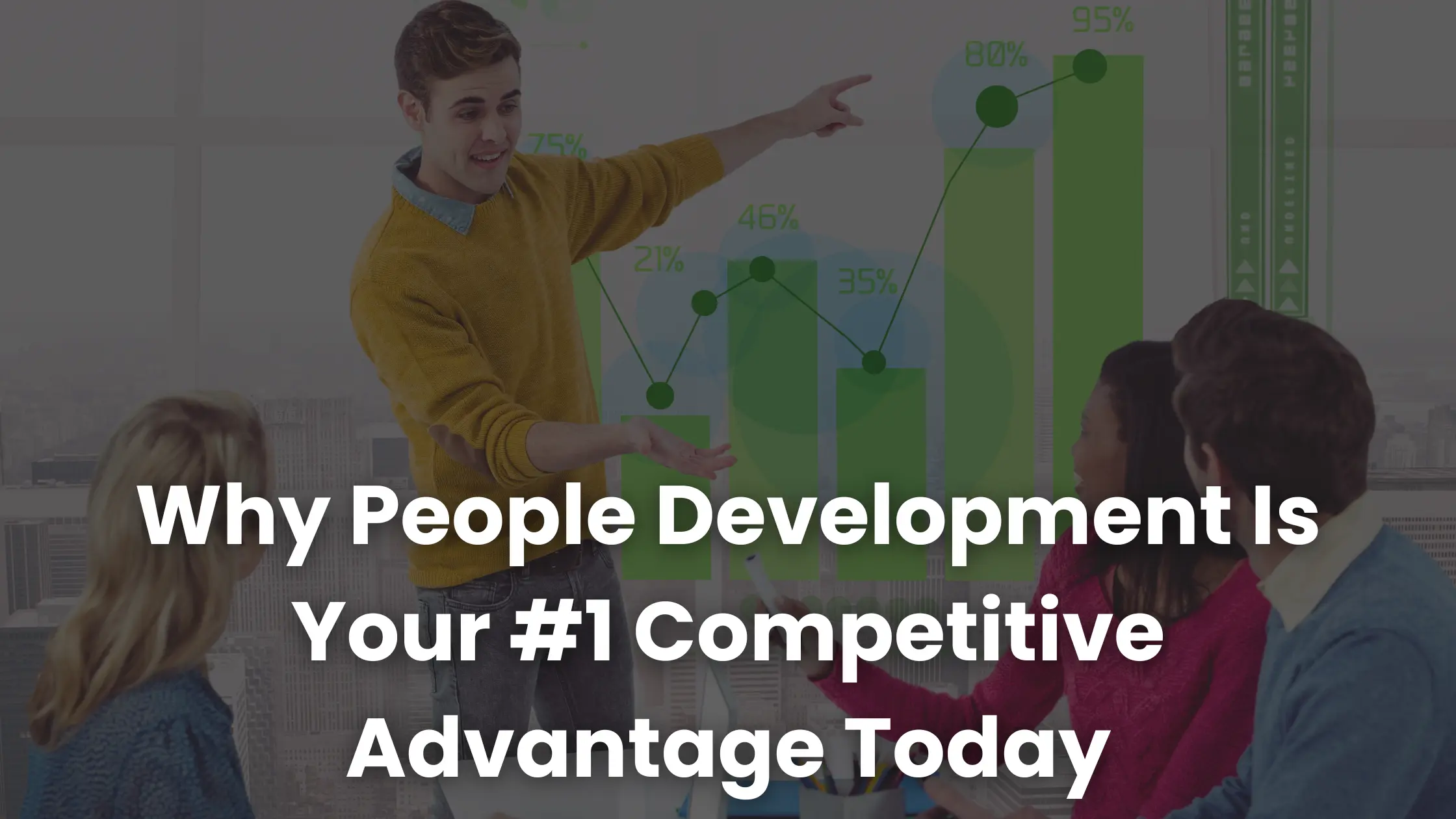
People development is the reason your team stays, grows, and drives results. When companies stop investing in employee growth, they don’t just lose talent, they lose momentum.
Employees don't leave just companies, they leave managers who stop investing in them or the cultures that stop challenging them.
This shows that people development isn’t just a perk anymore, it’s the reason your best people stay. Those people are your only true unfair advantage, not your tech, not your products.
So, how can you use people development to your advantage?
Let’s find out.
People development means helping your employees grow in a way that benefits both them and your business. It’s about guiding people toward their full potential, professionally and personally.
In simpler terms, it is the ongoing process of investing in your employees’ skills, confidence, leadership, and career growth.
Surveys show that nearly 94% of employees say they would stay longer at a company that invests in their learning and development. This means, investing in employees eventually improves business performance.
Remember, when employees grow, teams perform better, turnover decreases, and innovation increases.
The working landscape is changing rapidly, and so are the employees. Companies that fail to adapt aren’t just losing market share; they’re losing the very teams that helped build the company from the bottom up.
This is why people development is no longer a ‘nice-to-have’; it's a strategic necessity. Below, we’ll discuss in detail exactly why investing in your people has become critical to business long-term growth.
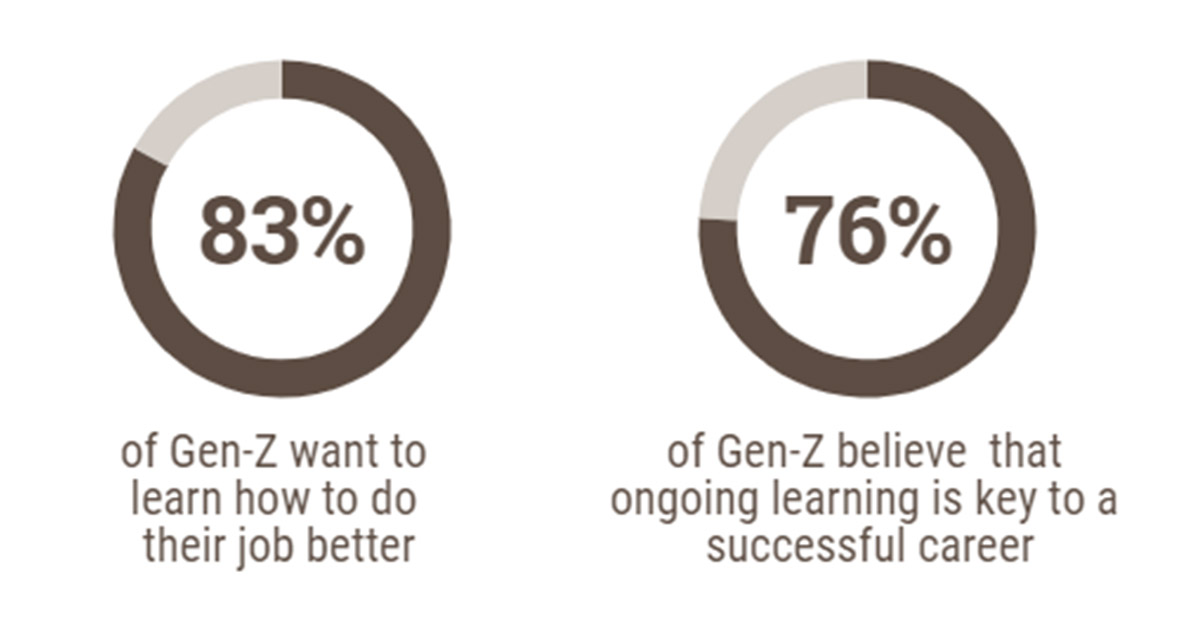
Over the past five years, we've witnessed a dramatic shift in how, where, and why people work, driven largely by the emergence of Gen Z in the workforce. In the U.S. alone, there are over 50 million Gen Z employees, who bring a different mindset to the table.
For this generation, work isn't just about earning a paycheck or climbing the corporate ladder. Work-life balance, continuous learning, and personal growth are top priorities.
According to LinkedIn's 2023 Workplace Learning Report, 76% of Gen Z employees believe that learning is the key to career success. They're not even afraid to walk away if employers fail to deliver on that commitment.
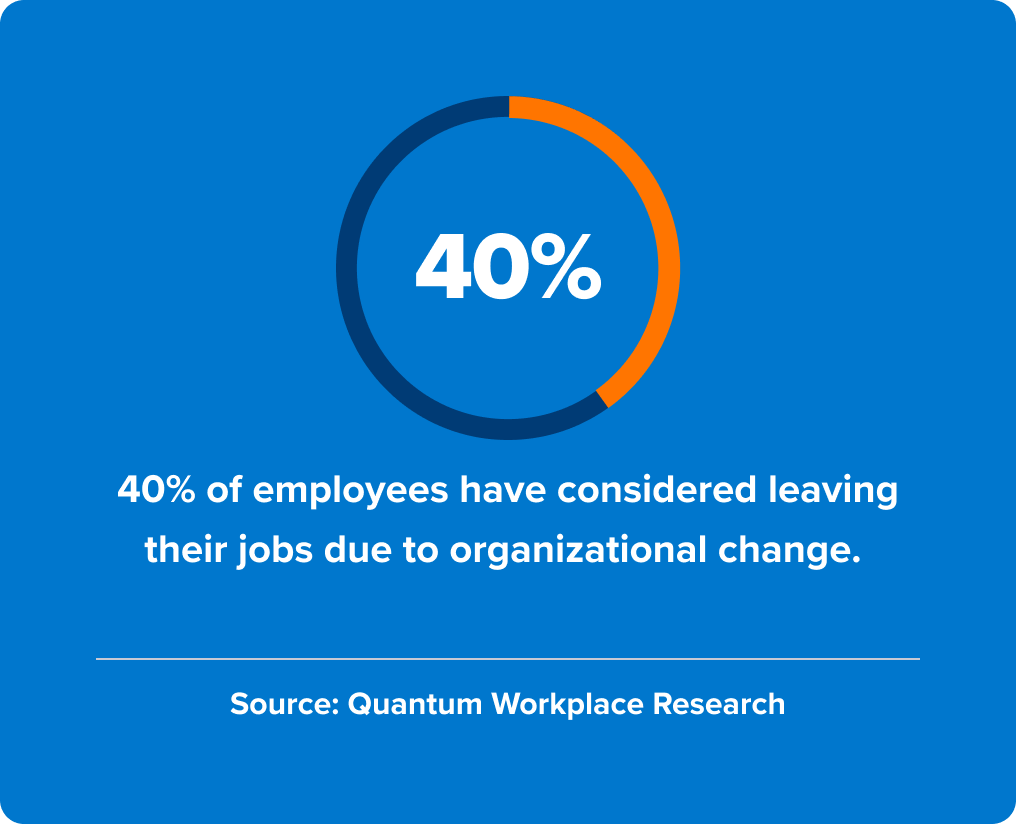
According to a McKinsey survey, nearly 40% of employees globally were considering leaving their jobs within three to six months in 2022. While there could be many reasons behind this trend, research highlights one key factor: 30% of employees cited the lack of learning and development opportunities as their reason for leaving.
This clearly shows how important it is to invest in people's development. With the right training and growth opportunities, companies can significantly improve retention.
People development creates an immediate and measurable value for your business. It’s because when employees are growing, they stay longer, contribute more, and solve problems faster.
Here’s how this improves your business outcomes:
Replacing an employee is expensive.
Between recruiting, onboarding, and lost productivity, the average cost of replacing a single worker is around 6 to 9 months of their salary.
But here’s the good news: Employees who feel they are growing are 2.9x more likely to stay, according to LinkedIn’s 2024 Workplace Learning Report.
That means employees don’t leave because they don’t want to work hard; they do so because there’s nothing more to learn there.
Hiring externally is often a riskier and slower process. That’s why companies usually prefer promoting employees as they’re already familiar with the company policies.
In fact, on average, internal hires take 18% less time to onboard and perform much better in the first year than any external candidates.
However, this advantage only exists when companies actively invest in people development. Without consistent learning and upskilling, employees won’t be ready to step into higher roles, leaving organizations with no choice but to look outside.
Upskilled employees don’t just do more, they think bigger. When your team is constantly learning, they solve problems more efficiently, take ownership of their results, and bring new ideas to the table. Moreover, it reduces errors and improves customer satisfaction.
As per Harvard Business Review, organizations with strong learning cultures are 52% more productive and are more likely to innovate.
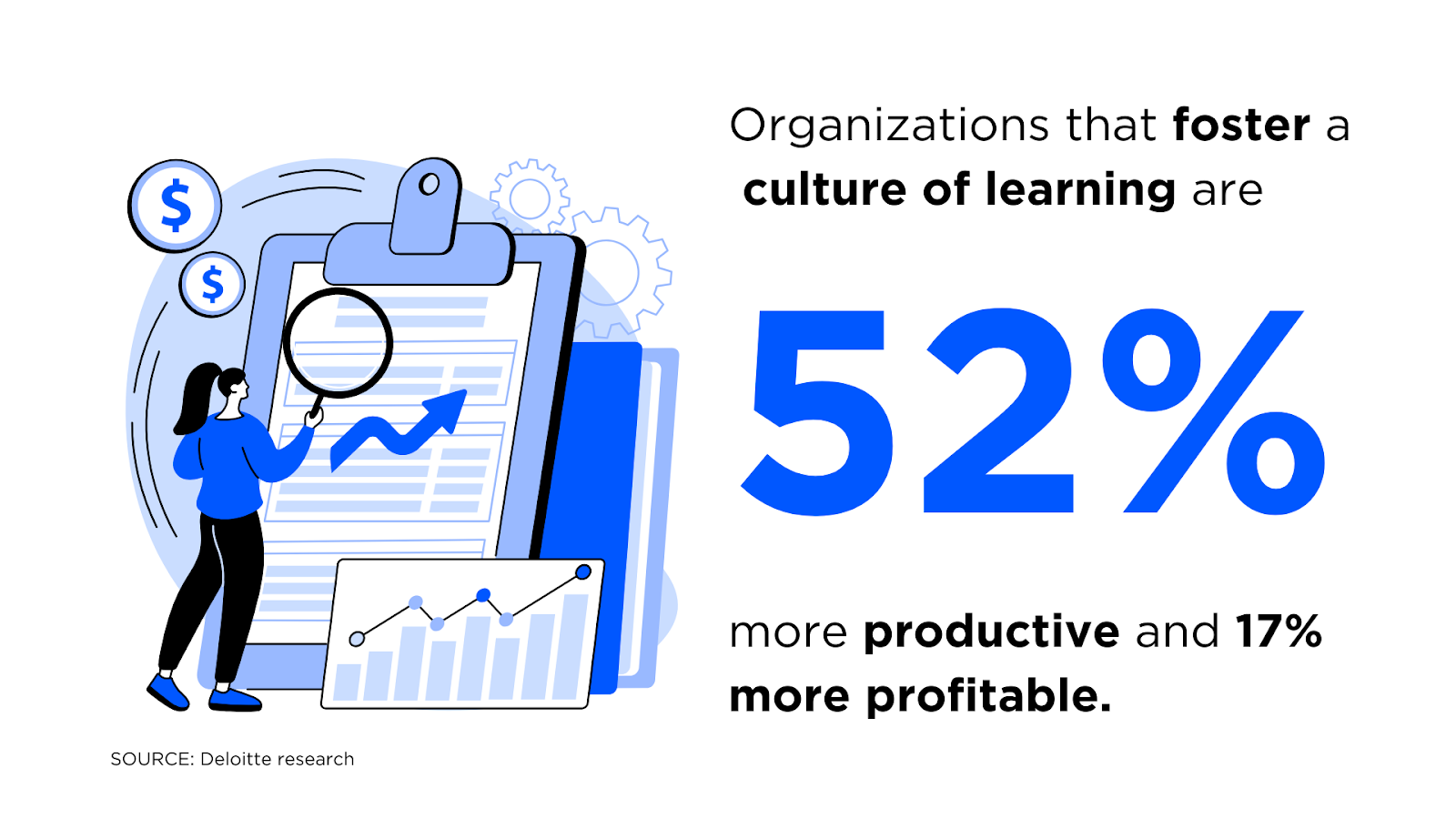
Absolutely. Your technology might give you speed, and your strategy might give you direction, but it’s your people who bring both to life.
Without them, even the best tools and plans fail. Let’s find out why.
Technology is a multiplier, as it helps you accomplish tasks faster, more efficiently, and on a larger scale. But it doesn’t decide what to do or why to do it. That part still relies on human judgment, leadership, creativity, and teamwork.
Think about it for a minute: A powerful data analytics platform won’t generate real insights if your team doesn’t know how to ask the right questions.
Similarly, an advanced CRM is useless if your sales team isn’t trained to build strong relationships or understand customer pain points.
A good strategy is essential. It maps out your professional development goals and direction. However, strategy is just a plan on paper until someone turns it into action.
That’s where people come in.
Whether it’s launching a product, entering a new market, or improving customer service, your team’s ability to problem-solve determines the likelihood of your success.
If your team doesn’t understand the vision or doesn’t feel motivated to pursue it, execution falls apart, no matter how solid the plan is.
When you actively invest in your people, something powerful happens. They don’t just follow instructions; they take ownership of their work.
Moreover, your employees start spotting problems before they grow, suggesting better ways to do things, and leading others. This mindset cannot be bought. It’s built on trust, coaching, feedback, and opportunities for growth.
In other words, a team that’s continuously developing doesn’t just work harder. They work smarter, and they make the business better.
To use people development as your competitive advantage, you need more than generic training sessions. Your strategy should focus on teaching the right skills, behaviors, and mindsets that prepare your employees to perform today and lead tomorrow.
Here’s what it should ideally include:

Your first priority should be teaching people the skills they need to perform better in their current roles. This includes both hard and technical skills that align with your team's goals and business priorities.
93% of the CEOs who introduced upskilling in their companies saw a significant increase in productivity and business performance.
An example of this is a marketing team that requires more advanced skills in data analysis, or your sales staff that might benefit from training in handling objections.
Leadership development shouldn't be reserved for senior managers. Employees at all levels, including those in entry-level positions, should benefit from learning how to make smarter decisions, take ownership, and lead small-scale initiatives.
Some key topics that you can include in the training are:
A 2023 McKinsey report found that companies with strong internal leadership pipelines are 240% more likely to outperform their competitors in terms of profitability and innovation.
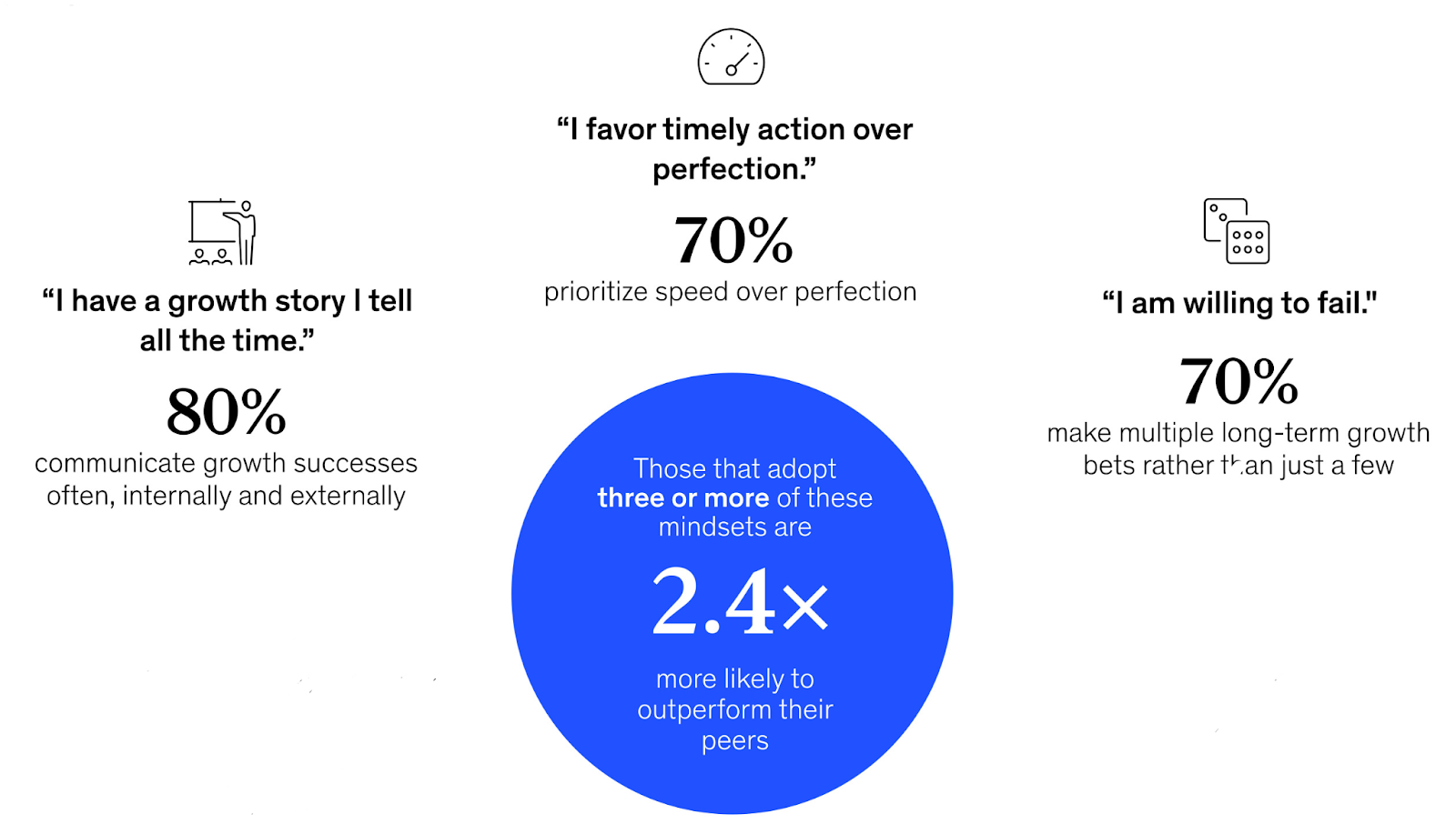
Every organization struggles with cross-functional silos and miscommunication. A strong people development strategy must address this head-on with training that strengthens communication, especially in hybrid or global teams.
Topics that could be covered include remote collaboration best practices, giving and receiving feedback, and presentation skills.
Interestingly, a recent study found that 86% of employees believe poor communication is one of the primary reasons for workplace failures. Even your best talent won’t reach their full potential if they can’t communicate effectively.
The most effective employee development programs are those that align with the size, structure, and needs of your organization. Below is a table of popular types of people development programs, their focus areas, and why they matter.
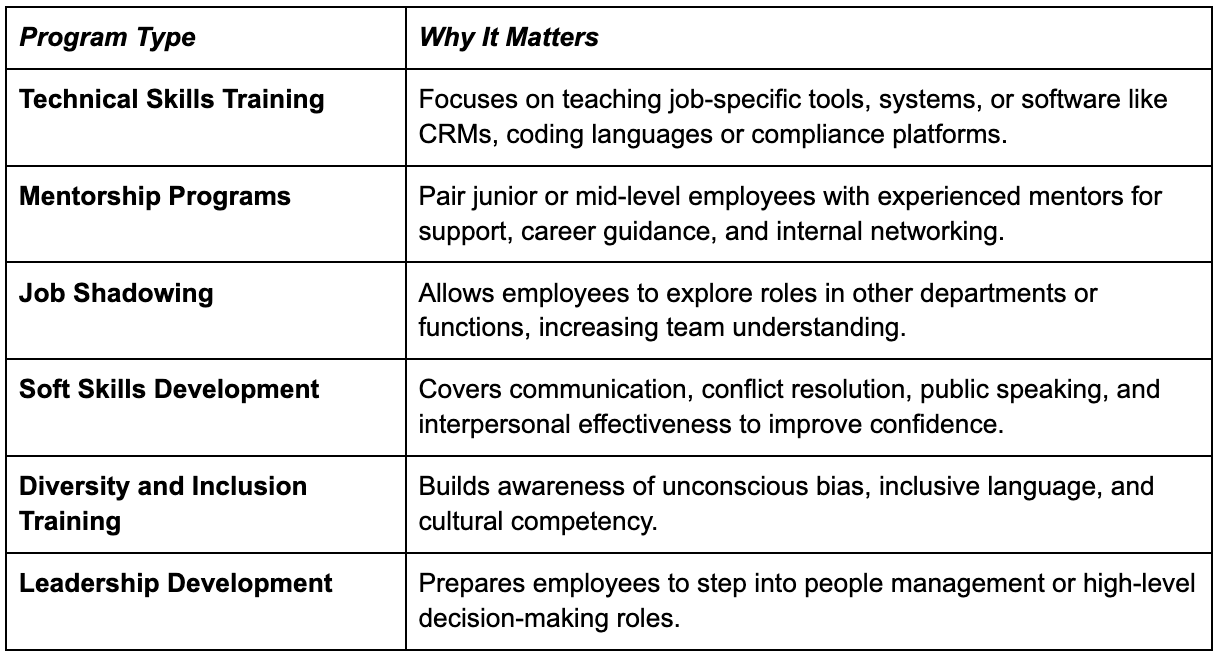
Mistakes Companies Make About People Development
Most companies claim to care about developing their employees. However, upon closer examination, their actions reveal a different story. It’s not always about bad intentions; it’s about outdated beliefs, rushed programs, or simply not knowing what it is.
If you don’t want to end up like those companies, make sure to avoid these mistakes:
This is one of the biggest blind spots. Although HR plays a significant role in designing learning programs, people learn best when their direct managers are involved. It includes coaching them, providing feedback, and offering genuine growth opportunities.
A Gallup report revealed that managers account for 70% of the variation in employee engagement. That means if managers aren’t part of the development journey, results will fall flat.
Remember, people don't grow from policies; they grow from consistent support and encouragement.
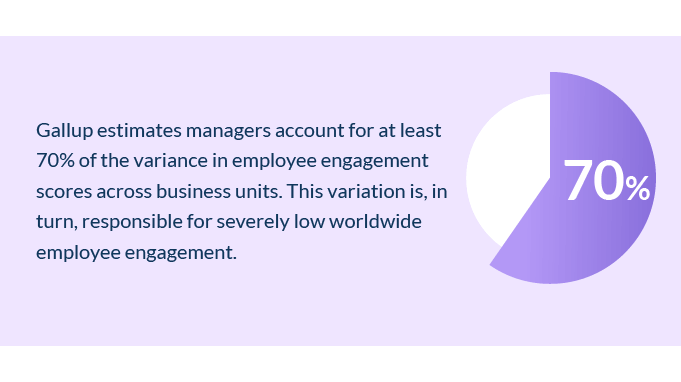
Another common mistake is confusing “training” with “development.” Training is usually short-term and skill-based, such as how to use a tool or meet compliance standards. It’s important, but not good enough.
On the other hand, development is bigger. It focuses on mindset, adaptability, leadership, and long-term capacity. When employees are involved in discussions, they think critically and take on roles that they didn’t think they were ready for.
It’s natural to invest in your star players. But that often leaves behind a massive group of employees who have potential, they just haven’t had the chance to show it yet.
By focusing on the top 10%, companies miss the opportunity to build a strong middle. These are actually the consistent performers who keep everything running and can grow into future leaders with the appropriate support.
If you’re still treating people development as optional, you’re already falling behind. You may already be noticing major challenges, such as high turnover, rising burnout, or teams that feel flat instead of being future-ready.
These aren’t just surface-level issues; they point to a deeper development gap. The only way to close that gap is through a strategically designed people development plan.
If you’re ready to make that shift, Coursebox can be a powerful partner in helping you build, scale, and sustain learning that drives real impact.
With Coursebox, you can turn documents into AI-generated training videos and use them to train your employees. It also offers an AI Chatbot that can assist your employees in real-time and solve their problems.
Try Coursebox today and be the leader who builds future-ready teams.
People development focuses on growing skills and career development. Meanwhile, employee engagement is about how connected and motivated someone feels at work. The two go hand in hand, but development yields long-term results.
Definitely, even with limited resources, coaching, mentorship, and role-specific training help retain talent. These growth opportunities demonstrate to employees that they don’t have to leave to advance.
To determine if your people development program is effective, look for changes in behavior. For instance, observe whether employees are applying new skills, demonstrating leadership, or enhancing their performance. Additionally, track engagement scores and retention rates to identify which employees are excelling in their learning and which ones are not.
The most effective way to upskill employees is to utilize targeted learning formats, such as micro-courses, workshops, on-the-job training, and peer learning. Focus on just 1-2 critical skills at a time. Ensure that you don't overload your employees and teach them what’s most needed now, rather than everything at once.
